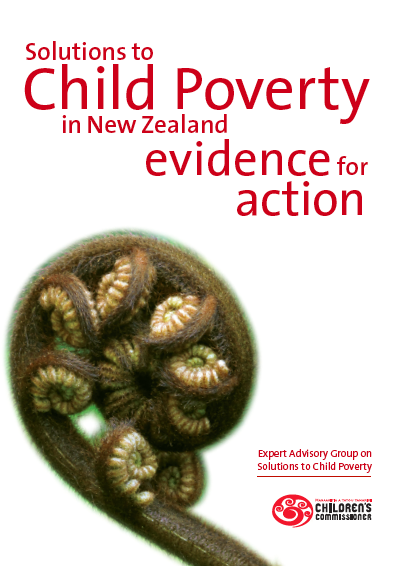This week the Children’s Commissioner published ‘Solutions to Child Poverty in New Zealand: Evidence for action‘, a report from the Commissioner’s Expert Advisory Group on Solutions to Child Poverty. I was privileged to be a member of this Expert Advisory Group and to offer my two-cents worth of input into the discussion about how we as a country might better honour our duty of care to children. There are around 200,000 children living in poverty in New Zealand and half of these children are Maori or Pasifika. While this raises issues about why Maori and Pasifika children are at more risk of being in poverty, it also highlights the fact that poverty is not solely a brown issue.
Based on the consultation that preceded the report, Whānau Ora is endorsed as an initiative with the potential to lift children and their whānau out of poverty.
There was support for the continuation and expansion of the Whänau Ora approach to empower families and children to identify goals and progress toward them. The analysis indicated that the learning from this way of working could be applied across government and community to reduce child poverty and mitigate its effects. There was some suggestion that a kaupapa Mäori approach would be the most effective route to reducing child poverty, and others that indicated more could be done through Treaty settlements to implement solutions to child poverty and disadvantage. Overall, respondents were supportive of trying different and innovative approaches for addressing Mäori child poverty. (p.20)
My question for you is this: How can we as researchers undertaking research with and for whānau hone our research lens so that issues of poverty and inequity are central to our analysis of what’s occurring for whānau, and for tamariki (children) and rangatahi (young people)? While our ‘unit of analysis’ (i.e., the group we’re trying to say something about) may be whānau, we should not forget that special skills, appropriate methods, and attentive ways of listening and hearing are needed so that the voices of tamariki and rangatahi are not overlooked or marginalised.
One of the tools we’ve used in research with tamariki is the ‘Oprah’ mike. This is one of those tv-style interviewing microphones, with an on-off switch on the side. When tamariki control this mike they can choose whether what they are telling us in ‘on record’ or ‘off record’ because they can switch the mic on and off, starting and stopping what’s recorded. We also ask tamariki for their okay to be interviewed – giving them a participant information brochure and a box they can tick if their involvement in the research is ‘okay with me’. So even if their caregiver consents to their involvement, we don’t proceed unless it’s also okay with them.
Participatory Action Research with taitamariki (rangatahi) by Moana Eruera and Terry Dobbs highlights the importance of asking young people how researchers should talk with them. Seeking the advice of young people upskills researchers about the language and vocabulary young people use to talk about the issues that are important to them. When young people share with us it should be taken for granted that we reciprocate by involving them in our research, share our skills with them, and provide them with opportunities to undertake research (and be paid from our research budgets).
Ultimately we’re looking for ways in which our research process can uphold the mana (status) of children and young people, and honour the valuable contribution they can make to helping us, as researchers, understand their reality. This understanding is perhaps most important when we’re looking for ways that our research can support Whānau Ora and a desire for tamariki and rangatahi to fulfil their potential as members of whānau and as citizens of this country.

